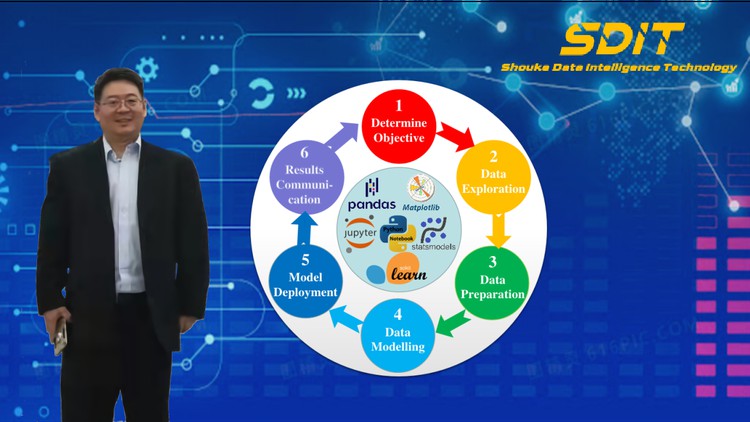Master Python Data Analysis and Modelling Essentials
In this real-world project, we used Jupyter notebook, Numpy, SciPy, Pandas, Matplotlib, Statmodels, and many other tools.
What you’ll learn
Master Python Data Analysis and Modelling Essentials
- Data is analyzed and modelled in this process.
- Setting up a Python environment for data analysis and model building.
- A look at the data.
- Rename the data fields.
- The process of slicing, sorting, filtering, and grouping data
- Find out if a value is missing and put it in
- Detection and treatment of outliers.
- Correlation analysis and the selection of features.
- Data is split up for fitting and testing models.
- Data normalization in a variety of ways.
- In statistics, this means making a classic linear regression model.
- An example: Making a machine linear regression model.
- Interpreting the results of the model
- Making the models better.
- When you look at the models,
- Seeing the results of the model.
Requirements
-
Basic Python language knowledge is needed to understand the codes
Description
We live in a world where data is everywhere, so it’s important to learn how to analyze and model data because these skills are important. People use Python more than Java and C because of the TIOBE Index, which says that since October 2021, Python has been the most popular programming language. The poll by KDnuggets says that Python is one of the best Data Science and Machine Learning tools out there.
In this course, you’ll learn how to look at data, find problems, and fix them, and how to build classic statistical regression models and machine learning regression models step by step in an easy-to-follow way. You’ll also learn how to use well-known Python libraries to do this. This course is best for people who are at the beginning or intermediate level, but many of the methods are also very useful for people who are more advanced. be able to:
- To look at data with the Python Pandas library
- To change the name of a data column in different ways
- Find out which data points are missing or have a lot of different values
- To use different ways to fill in the gaps and deal with the outliers
- Correlate the features and choose them based on the results of the study
- To use different ways to encode the categorical variables
- Fit the model, improve the model, evaluate how it works and show how it works, and many more.
Who this course is for:
- Analysts for business.
- Data analysts are people who do this.
- Statisticians.
- Engineers and scientists who can help with data analysis, modeling, and machine learning.
- Anyone who wants to learn how to use Python for his or her projects.










